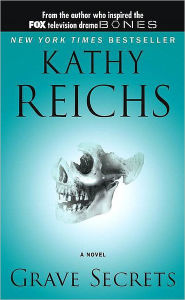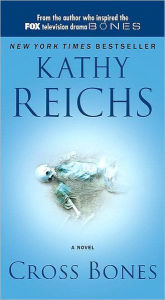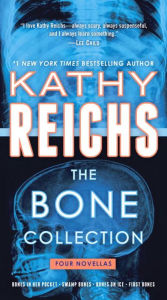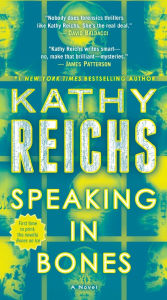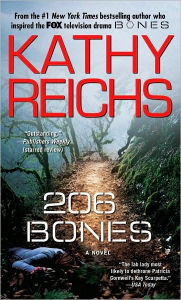Both a forensics expert who has seen—firsthand—the aftermath of murderers and a novelist whose heroine tracks villains like the "Blade Cowboy," Kathy Reichs has some ideas about what the face of evil looks like: ordinary. "I see the perpetrator across the courtroom when I'm testifying. Generally, I'm underwhelmed," she said in a 2000 interview published on her web site." I'm always shocked by how totally normal they look. They look like my Uncle Frank, usually."
Reichs mulled over those experiences for about seven years before deciding to apply her ideas to fiction. Out came Déjà Dead in 1997, introducing mystery fans to a new but, more likely than not, recognizable heroine: forensics expert Temperance Brennan, a fortyish, recovering alcoholic on the run from a wobbling marriage. Brennan—a sort of mix between Nancy Drew and Quincy—is also something of a hothead, prone to marching off on her own when she runs afoul of a sexist male cop. This is the kind of woman who would sit down to brunch with Vic Warshawski, Kay Scarpetta, or Jane Tennison, if any of them did brunch.
As a forensic anthropologist for the state of North Carolina, as well as the province of Québec, Reichs draws heavily from her own experiences standing over the autopsy table. Her novels—Death du Jour, Deadly Decisions, Grave Secrets and the like—are packed with the kind of well informed clinical details that make critics take notice. "The doctor clearly knows a hawk from a handsaw," wrote The New York Times about one of her books.
She also built some parallels to her own biography when creating Tempe Brennan. Both women are forensic anthropologists with the unlikely dual addresses of North Carolina and Canada. But Reichs rolls her eyes when asked about the comparisons. "Personally, she's completely her own person," Reichs told USA Today in 1997. "She gets physically involved. She takes risks I've never been tempted to take."
Reichs was editing forensics textbooks when she began toying with writing a novel. The initial result, she said, was a dud: slow, boring, and in the third person. But it picked up steam when she came up with the Brennan character. Inspired by friend and medical examiner Bill Maples, author of Dead Men Do Tell Tales, she sat down to write, meticulously drafting an outline of her story and getting up early to write before teaching classes at the University of North Carolina. It took her two years.
The effort paid off when her manuscript made the rounds of the Frankfurt Book Fair. A heated auction won Reichs a million-dollar, two-book deal.
Critics and readers alike loved Tempe. Wrote the Library Journal, "Despite her ability to work among fetid, putrefying smells that 'leap out and grab' and her 'go-to-hell attitude' with seasoned cops, Tempe is as vulnerable as a soft Carolina morning." And People magazine said, "Reichs not only serves up a delicious plot, she also brings a new recipe to hard-boiled cop talk."
Over chicken salad lunches with newspaper reporters, Reichs will casually talk about dismembered bodies, maggots, and concerns for her children's security in light of some of the unsavory characters she'd testified against. But then she'll confess her true idea of a waking nightmare. "[My] idea of horror would be to sit in a little gray office all day and add up columns of numbers," she told USA Today. "I say to people, 'How do you do that?"'


